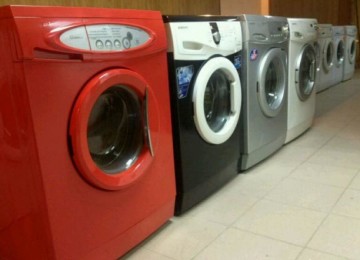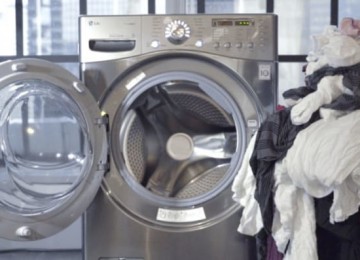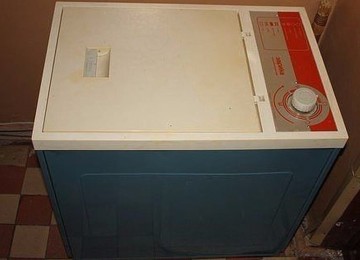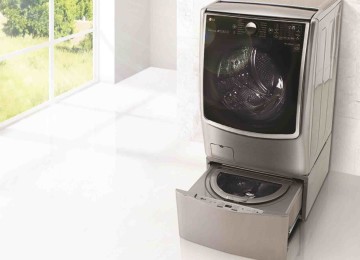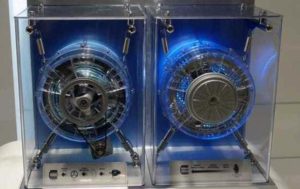 Choosing an automatic washing machine - this is not an easy matter, the main difficulty of which lies in their large assortment. When purchasing, you need to take into account all the main characteristics of the model and one of the first features that you need to pay attention to is the direct drive or belt in the washing machine. In many ways, the consumer characteristics of the device and, of course, the price depend on this.
Choosing an automatic washing machine - this is not an easy matter, the main difficulty of which lies in their large assortment. When purchasing, you need to take into account all the main characteristics of the model and one of the first features that you need to pay attention to is the direct drive or belt in the washing machine. In many ways, the consumer characteristics of the device and, of course, the price depend on this.
Types of washing machines by rotation transmission method
Washing machines presented in the retail chain, have different designs and technical characteristics, but each of them can use only one of two methods of transmitting rotation from the motor to the drum. A distinction is made between transmission by belt and pulleys and direct drive. Each of these methods has its own advantages and disadvantages. To figure out which is better, it’s worth taking a closer look at them.
Belt transmission
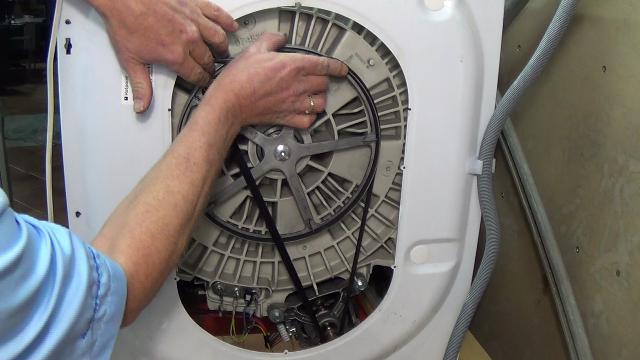
This type of washing machine was the first to appear on the market and still enjoys stable popularity.Each manufacturer, without exception, has belt drive models in its product line. The main feature of units of this type is clear from the name itself - a pulley is mounted on the shaft of the commutator motor, which drives the machine through an elastic belt.
There are two types of belts:
- wedge-shaped (single-stranded);
- polywedge-shaped (multi-stranded).
The most common belts are the second type. They are large, their working surface is several identical “streams”, each of which moves in its own groove on the pulley. Due to their design, such belts are obviously more durable, provide better grip, and thus better transmission of torque.
The belt is made of high quality rubber, which is reinforced with strong threads. Thanks to its elasticity, the drum starts and stops smoothly, without jerking, which reduces the load on the engine. The tachogenerator is responsible for regulating the speed. Depending on the selected program, it increases or decreases the current in the windings.
Direct drive
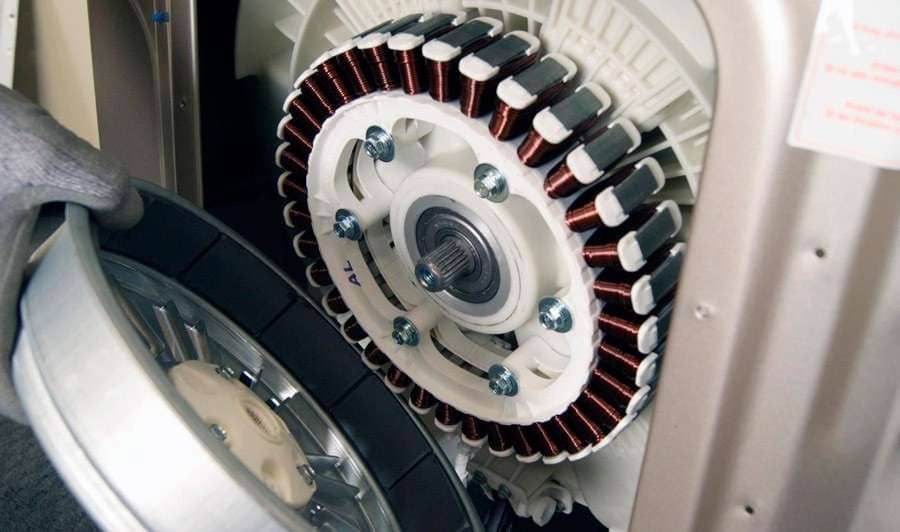
Modern washing machines of the upper price segment Most do not have a belt drive. In them, the drum is installed directly on the rotor shaft using a special bushing; this is the so-called direct drive. Such units use an inverter motor, the speed of which is regulated by changing the frequency of the supplied current.
Advantages and disadvantages of both types of machines
The question of whether it is better to transmit rotation through a belt or direct connection is still open. Models of both designs continue to coexist peacefully on store shelves; manufacturers are in no hurry to adjust the model range, therefore, the choice remains with the buyer himself.
Pros and cons of belt drive
Machines in which the drum rotates thanks to a belt and pulleys are a time-tested design. Over the years, manufacturers have developed optimal assembly technologies, which ensure:
- significantly lower price of the device;
- fairly long service life (up to 15 years or more).
- low load on the engine, due to the absence of a rigid coupling between the motor and the drum.
It is also impossible not to note the main advantage of such a scheme - ease of repair. In the vast majority of cases A failure of the washing machine drive is caused by belt wear. Its price is extremely low, and the replacement can be done with your own hands in literally 20-30 minutes.
These are all advantages, and they are significant, but the belt also has disadvantages. Among other things:
- smaller tank volume with the same external dimensions of the housing, which is caused by the need to place a belt and pulleys inside;
- high noise level, especially with uneven distribution of laundry;
- obviously higher load on bearings;
- the need to regularly replace the engine brushes and the belt itself.
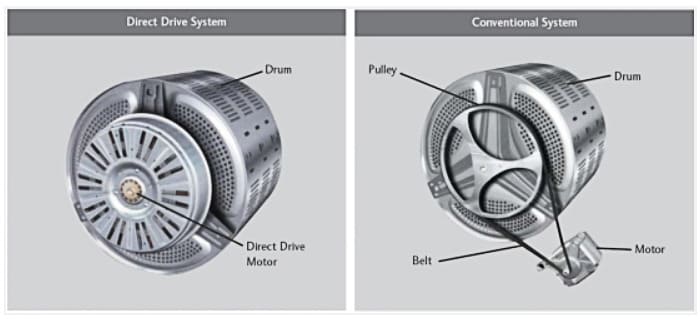
Pros and cons of direct drive washing machines
Models with a new type of transmission mechanism are actively promoted on the market. Marketing experts are full of compliments, describing all the advantages of direct drive, which eliminates belt drive.Some of their statements are controversial, but in general, such devices do have a number of advantages. Among other things, the following cannot be ignored:
- larger drum volume due to the absence of a belt and pulleys;
- high reliability due to the absence of an intermediate link between the engine and the drum;
- significant energy savings due to the use of inverter motors;
- low level of vibration and noise even at high speeds;
- load control, indication of exceeding the permissible weight of laundry;
- effective washing, easy diagnosis of problems with direct drive parts.
Most manufacturers of this kind of washing machines offer a ten-year warranty on the engine, which cannot but please buyers, but this does not exclude the possibility that some other part will fail during this period.
Pros of direct drive washing machines look very significant, but before making a final decision, it is worth considering the obvious shortcomings, alas, they also exist. Those who are going to buy a washing machine of this type should take into account the following disadvantages:
- obviously higher price of purchase, operation, repair;
- sensitivity to power surges, such a washing machine should be turned on only through a stabilizer;
- quick erasing of the sealing gland.
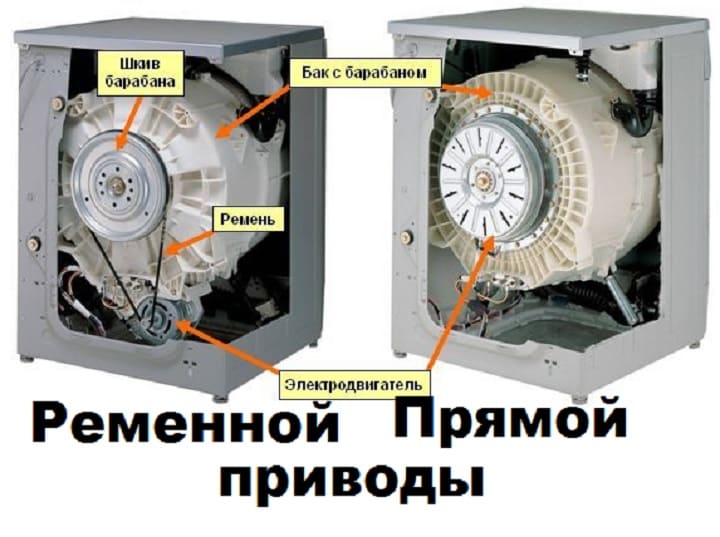
As a subtotal
All of the above allows us to conclude that an ideal washing machine does not exist. This is relevant for all its consumer characteristics, including the type of transmission of rotation to the drum shaft.Each of the existing types has its own positive and negative sides; you need to choose based on your own preferences and financial capabilities; in any case, you should buy only equipment from famous manufacturers. Products from a well-known brand are a guarantee of durability and quality, regardless of technical features.
Several common models with different transmission types
To get a complete picture and simplify the choice of a new washing machine, it is worth comparing two types of machines from the same manufacturer. This will give you the opportunity to navigate the parameters and evaluate the difference in cost.
Washing machines from the LG range

Models F-80B8LD0 and F-80B8MD have completely identical technical characteristics, the only difference is the type of drive. The first has a direct drive drum, the second has a belt drive. Both of these devices belong to the class of front-loading machines.
The machines are narrow, the dimensions of each of them are 60x44x85 cm. They have the same energy consumption at level A+, washing class A, maximum spin speed of the drum 800 rpm. Both machines offer the same set of programs and additional features. At the same time, a model with direct drive is sold for an average of 25 thousand rubles, the price of a machine with a belt fluctuates at the level of 21-23 thousand rubles.
Hotpoint-Ariston RST 702 X and VML 7023
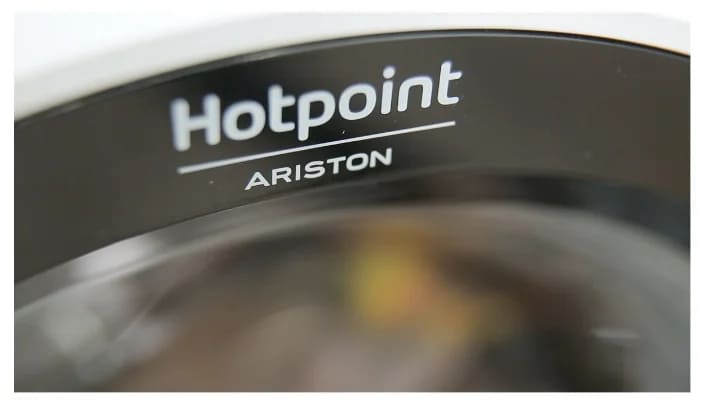
These models are also almost identical. There are minor nuances in terms of design, but otherwise there are no significant differences, except for the type of drive. Both washing machines can load up to 7 kg of dry laundry, and both have low energy consumption. The maximum spin speed of the drum can reach 1000 rpm, and there are 16 programs to choose from.
With completely comparable technical characteristics, a model with direct drive is sold for 20 thousand rubles, a device with a belt drive for only 16 thousand rubles. The difference in cost is quite significant.
Bosch models with different drive types

As in previous cases, the WAT 28541 and WAW 28740 models have completely identical parameters, the difference lies in the type of transmission. Each of them, with energy consumption class A+++, can efficiently wash up to 9 kg of dry laundry. You can choose from a complete list of necessary programs and a number of additional functions, including delayed start, drum illumination, etc. At the same time, a model with a belt drive will cost the buyer about 50 thousand rubles, and a similar one with direct drive will cost almost 70 thousand rubles.
A variety of washing machines is always good; the buyer should have the opportunity to choose. Which model to take: time-tested belt drive or modern innovative with inverter motor and direct drive is, of course, up to the buyer to decide. At the same time, it is important to take into account all the technical characteristics of the device; this is guaranteed to protect you from disappointment in the purchase.






